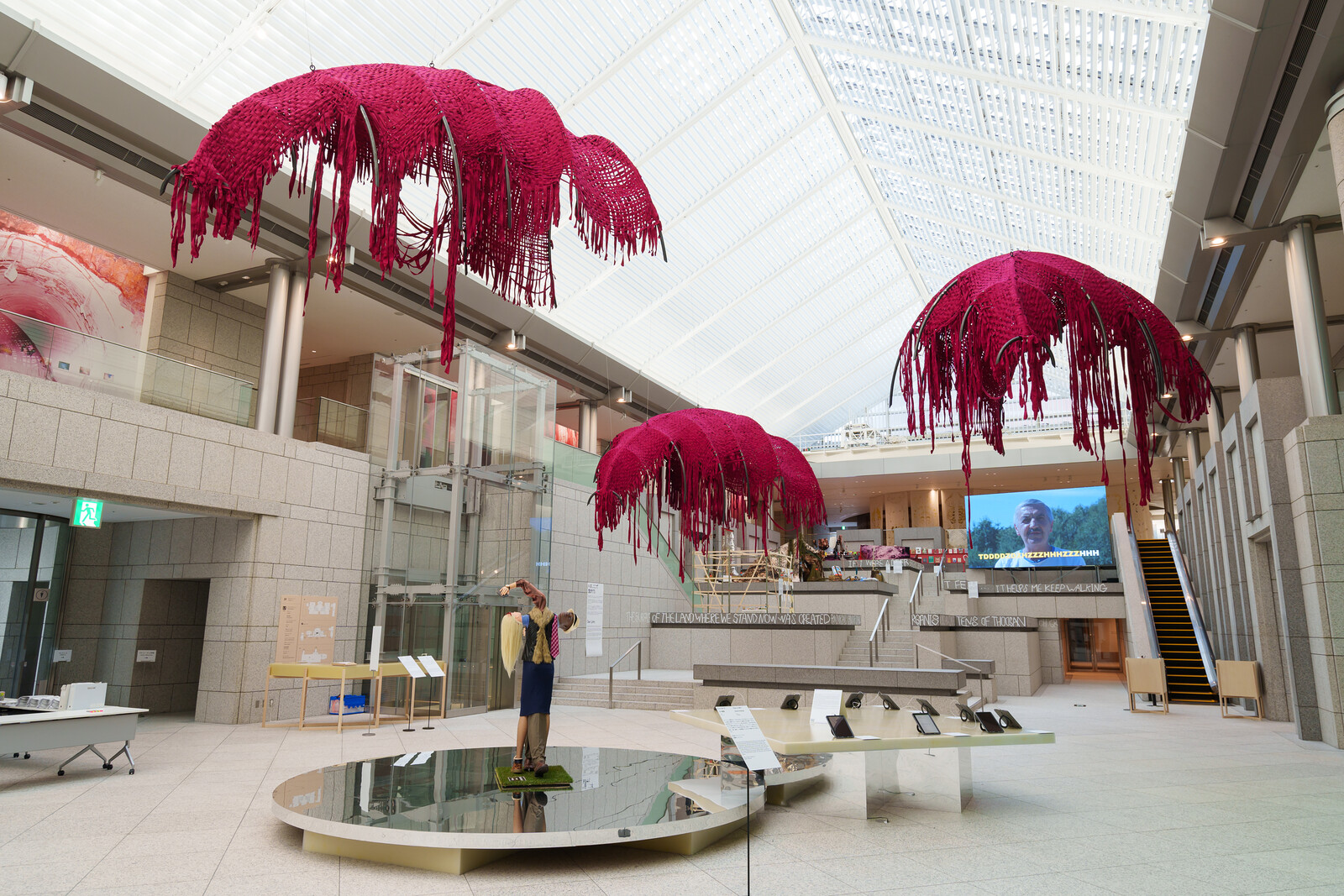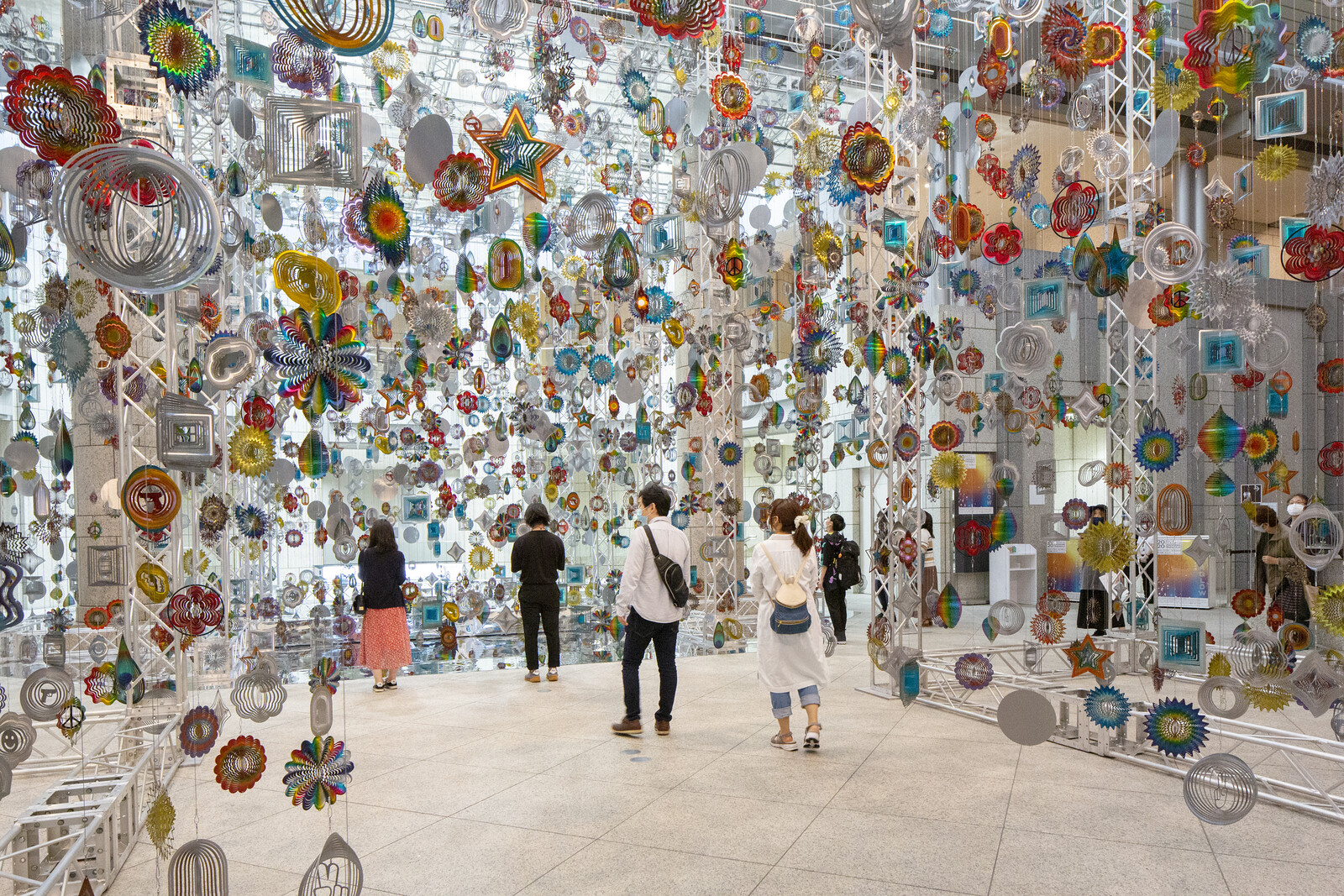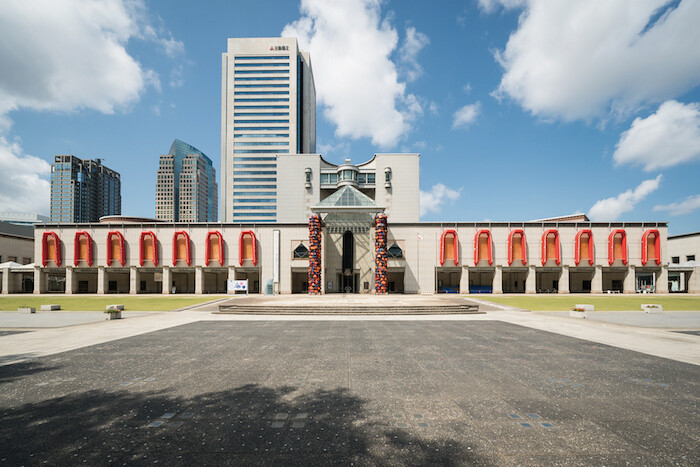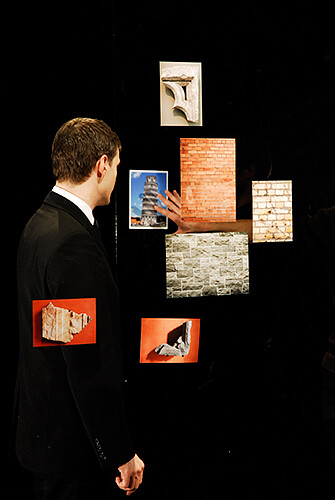Categories
Subjects
Authors
Artists
Venues
Locations
Calendar
Filter
Done
June 6, 2024 – Review
8th Yokohama Triennale, “Wild Grass: Our Lives”
Jörg Heiser

Crossing the street on my way to the Yokohama Museum of Art, the phrase “Wild Grass” flashed through my mind. Suddenly, I stumbled and fell. I was back on my feet quite quickly, but not before a passerby had asked in English whether I needed help. I had tripped over a ground reflector, as if being penalized for straying too far off course, and the warning—catastrophe can strike at any time—set the tone for the exhibition ahead. With a sting in my right hand and left knee, I entered the central venue of the Yokohama Triennale.
It’s fortunate that this year’s Triennale has coincided with the reopening of Kenzō Tange’s refurbished Museum of Art, its postmodernist spirit measured by his trademark modularity. The grand entrance gallery is an architectural gem: as you enter at its transverse middle, a series of tiered platforms rises gently to the left and right, spanned by a gabled glass roof with adjustable light slats. The curators of this edition, Carol Yinghua Lu and Liu Ding, have turned this theatrical space into the multi-sensory set of a dystopian scenario. Hovering overhead are three skeletal metal frameworks covered in crisscross vermilion textile strips, like the shed shells …
September 8, 2020 – Review
7th Yokohama Triennale, “Afterglow”
Koichiro Osaka

Masked commuters emerging blinking from quarantine and into Yokohama’s bayside district might think that the Museum of Art has disappeared. In place of its 180-metre-wide modernist façade is a dark, striated screen that—in fitting with the subtitle of the seventh edition of the Yokohama Triennale—resembles an analogue television screen patterned with the white noise caused by cosmic radiation from the “afterglow” of the Big Bang. Closer inspection reveals the source of this illusion: mesh drapes, patterned with vertical black-and-white stripes, have been suspended across the front of the building. This optical intervention by Ivana Franke, titled Resonance of the Unforeseen (2020), anticipates the haunting ways in which themes such as “luminous care” and “toxic glow” radiate through the exhibition.
Curated by New Delhi-based Raqs Media Collective, this edition of the triennale brings together 67 artists—many of them exhibiting in Japan for the first time—whose work engages with diverse belief systems, histories, and forms of sensory experience. The first non-Japanese artistic directors of the triennale state in an introductory text that their curatorial methodology is to “start with the sources” in order to “provoke us to think, to ignite, to learn, and unlearn.” These are collected in a “sourcebook” published …
September 7, 2017 – Review
6th Yokohama Triennale, “Islands, Constellations and Galapagos”
Cameron Allan McKean

The city of Yokohama blends almost seamlessly into Tokyo, forming one of the largest and most disaster-prone urban agglomerations in the world. But there are subtle differences between Yokohama and its northern neighbor—the smell of the Pacific, the quiet, moat-like boulevards—and major ones: this is where Western modernity breached the wall around “traditional Japan.” Coerced into trading with the West by the arrival of American warships led by Commodore Perry in 1853, the opening up of the island nation turned Yokohama from a quiet fishing village into a noisy port town. So it makes sense that an art festival—a machine for generating contemporaneity—emerged here in 2001, as Japan entered a new century.
The sixth edition of the Yokohama Triennial, titled “Islands, Constellations and Galapagos,” opened on August 4 at the Yokohama Museum of Art and three nearby sites. The event includes 38 artists and groups, with a significant contingent of Japanese names. New productions include East Java-based Joko Avianto’s The border between good and evil is terribly frizzy (2017), a large braided-rope-style sculpture woven from 2,000 pieces of bamboo, and Yukinori Yanagi’s updated Project God-zilla (2017) assemblage installed in the basement of the Yokohama Port Opening Memorial Hall. Other commissions, especially …
September 13, 2011 – Review
4th Yokohama Triennale, "Our Magic Hour: How Much of the World Can We Know"
Brian Sholis

Organizing an international biennial or triennial exhibition is, in principle, a thankless task. Your two main audiences, locals unfamiliar with recent artistic developments and globe-hopping art citizens eager for new discoveries, have opposing needs and desires. Apportioning artworks among multiple venues, securing the funding to meet an outsized budget, and coordinating the corporate, political, and cultural bodies with a vested interest in your efforts all present significant challenges. Add to this, however, the widespread devastation of a three-fold tragedy—earthquake, tsunami, nuclear power plant crisis—and one would have forgiven Yokohama Triennale 2011 artistic director Akiko Miki for walking away from her project. That she and her colleagues not only persevered but also managed to coordinate an impressive display of art spanning several centuries is, irrespective of one’s opinion of the show, worth commending.
This is the fourth edition of the triennale, and the first to make the Yokohama Museum of Art its primary venue. Titled “Our Magic Hour,” the show focused upon an ability to see the wonderful in the everyday that has long been popularly ascribed to artists. The magic invoked is not one of mysticism, but rather of the temporary suspension of disbelief: artists see things differently than you and …